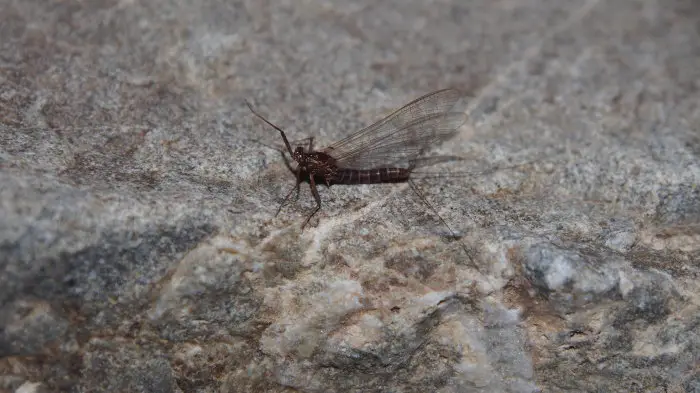Struggling to catch trout while fly fishing, this article provides a few hints to how better select and present flies to hopefully catch more trout.
How to present a dry to rising trout
- Present the fly above where you can see the trout rising, not at the site of the rise. The rise is where the trout took the natural, not where he was sitting prior to the take. Many novice anglers make the mistake of casting to where they see the splash, but the trout actually chooses its target well before it decides to rise. Cast upstream and allow it to drift down and over.
- Try to present your fly without covering the trout with your leader. Traditional wisdom has many anglers casting from behind. But in doing so, there is a good chance that the leader will cover the trout. The tippet porter might be very fine, and basically invisible, but the leaders can taper wide quite quickly.
- It is better to cast more at a 45-degree angle upstream to the cast, that way only the fly and tippet will travel over the rising fish.
- Ideally, try to cast directly opposite the fish, that way only the fly will drift through the trouts strike zone. Although getting into such a poisition without spooking the fish can be challenging.
- Emerger patterns are often more effective than a dun. Trout can be fussy feediers, trout which are feeding on emergers often ignores dun, while trout which are feeding on duns are much more likely to also grab an emerger.
How to read a rise to pick the perfect fly
The patterns a trout makes when feeding near the surface are a good indicator of what they are feeding upon. During a mayfly hatch, trout will often become fixated on one life stage.
This is when matching the hatch can be the difference between blanking or catching your limit. It is important to recognize the different rises of a trout because they help indicate which stage of the hatch they are feeding upon.
- If the trout risies its nose through the surface, often making a plopping sound indicates that a dun was taken from the surface. Jurvenile trout, can sometimes get so excited and even leap clear of the water after duns.
- A ‘sip’ or ‘bulge’ of the water indicates that the trout are feeding on emergers or nymphs just below the surface. If you listen carefully, it is often associated with a subtle ‘kissing’ sound as the trout sucks in its meal. A sipping trout will likely ignore a high floating dun imitation. If the ‘bulge’ occurs not duirng the hatch the trout could be feeding on shrimps or snails.
- A porposing trout, revealing its head and tail indicates a relaxed trout feeding on a spent spinner. A emerger pattern, resting low in the surface film is often the most succesful.
What to do if a trout continues to reject a fly?
- Try reducing the size of your fly. Reducing the size of a fly is usually more effective than changing the color or pattern. Always make sure to have a good selection of different sizes.
- Try using a skinnier less bulky-tied fly. Many shop-tied flies are overdressed, they have too much going on. So going back to basics with a thinly tied fly can often have a better outcome.
- Try reducing the diameter of your Tippit. It is quite simple really, the thinner the line, the harder it is for the trout to see. A thinner line is also less affected by the river’s currents, so less likely to develop drag.
- Try fishing the fly at various depths. Maybe you need more or less split shots. It is of paramount importance for the fly to present itself at the depth of the feeding fish.
- Tungsten beads nymphs are not always the best option. Some novice fly fishermen seem to be in love with tungsten bead nymphs and they have a box full of them. But they are not always the best option. When fishing in shallow water, a nonweighted nymph will drift and present itself much better.
- In heavily pressured water, changing the color of the fly or even the bead can trick otherwise educated fish.

